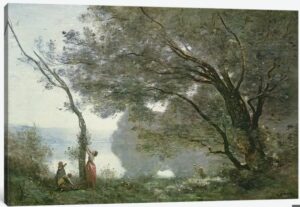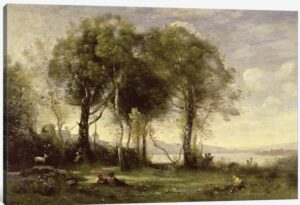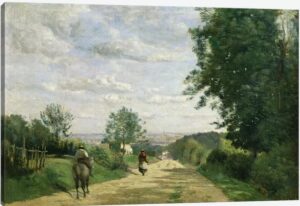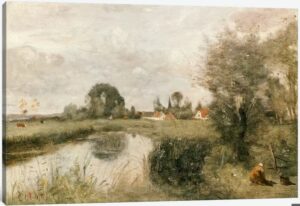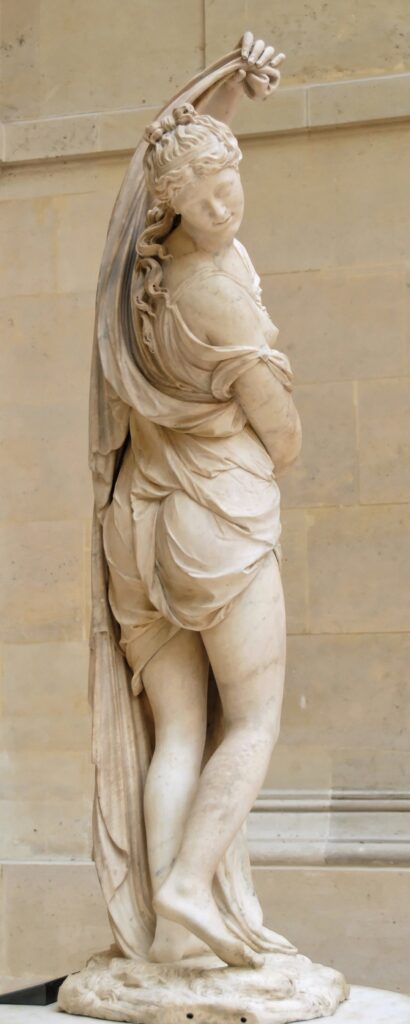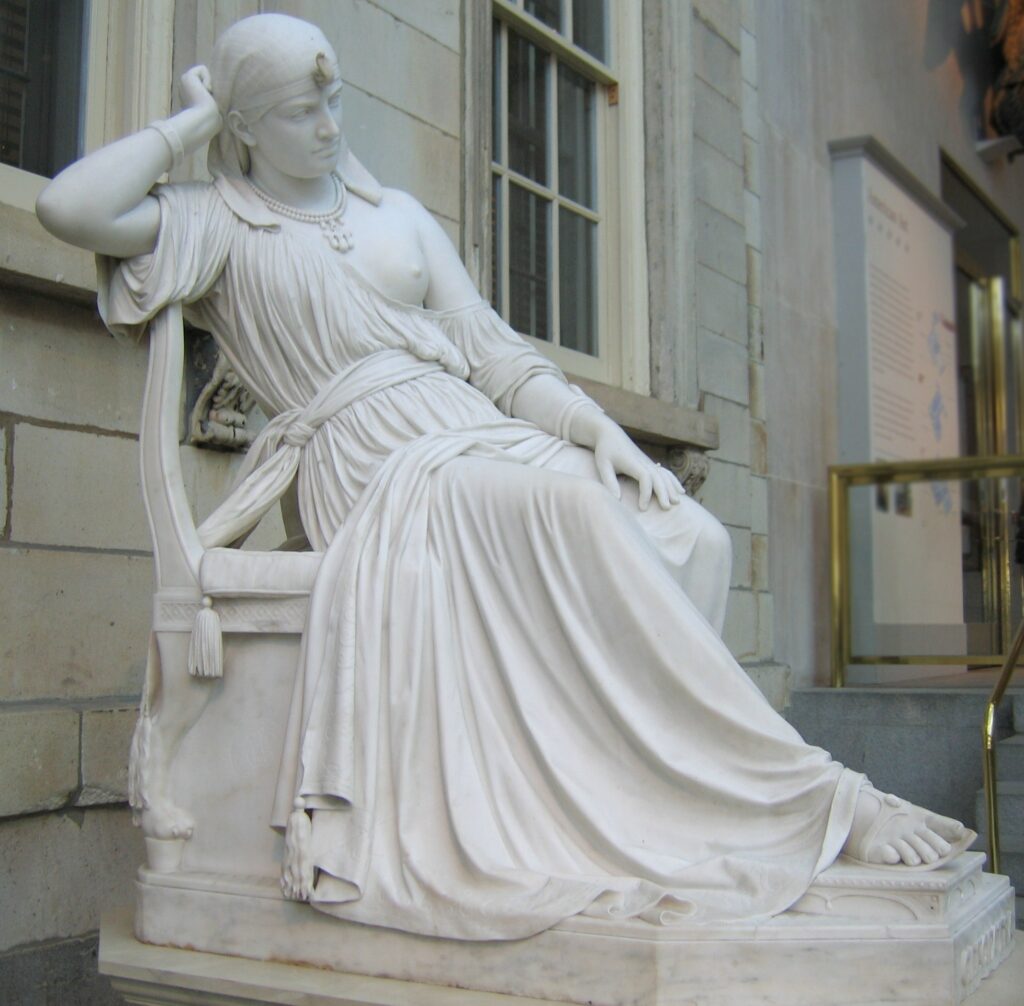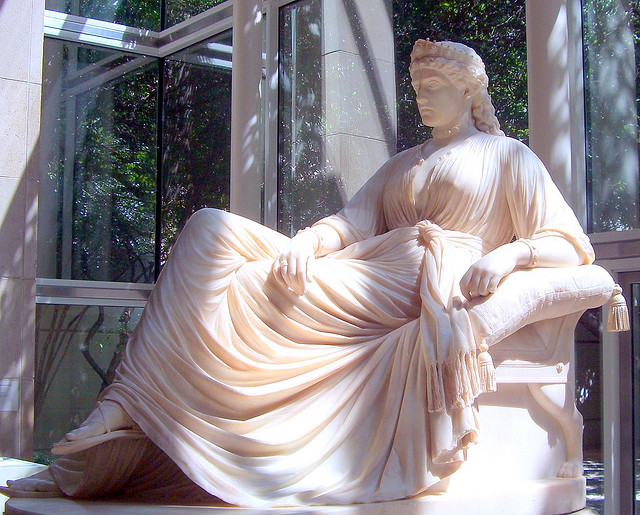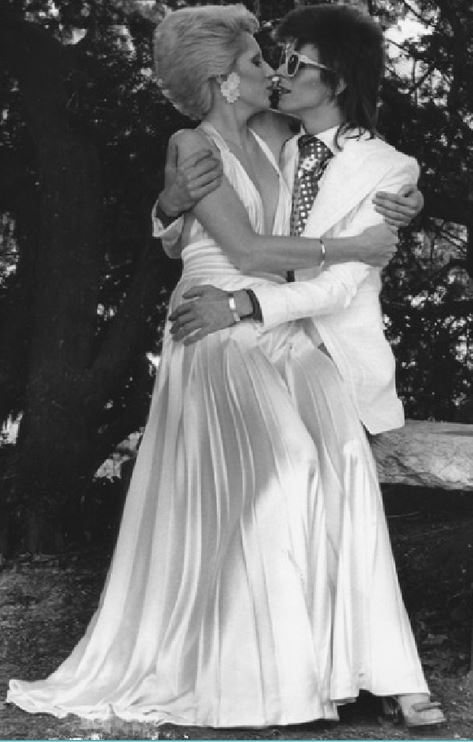Ever since I took a few Art Appreciation classes during my belated university career*, I have been an admirer of Corot’s landscapes — sheesh, okay, Jean-Baptiste-Camille Corot — because for some reason, they seem to me to straddle the hyper-realism of the Academy and the later swirling Impressionists like Monet. Here are a few which typify this part of his work:
A Farmyard near Fontainebleau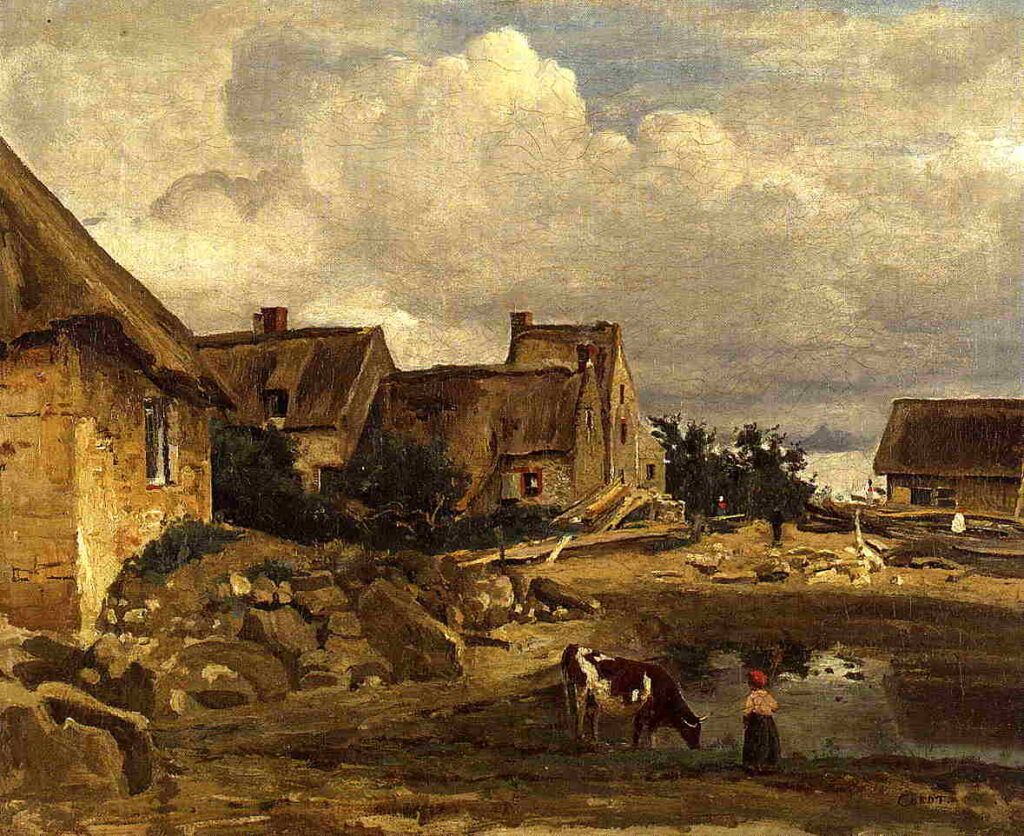
A Farmyard in the Nievre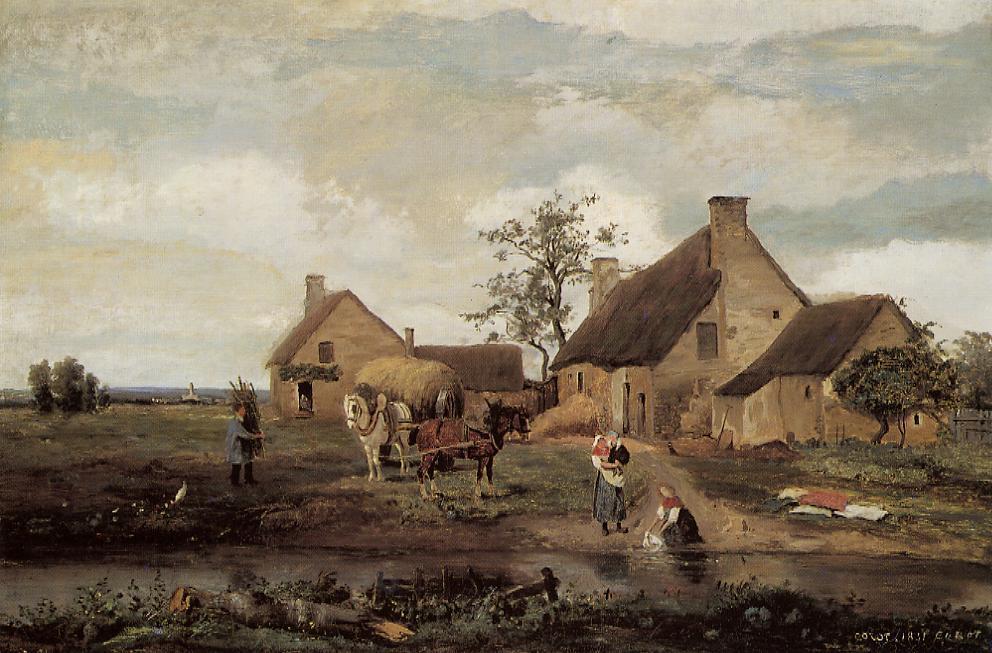
The Path leading to the House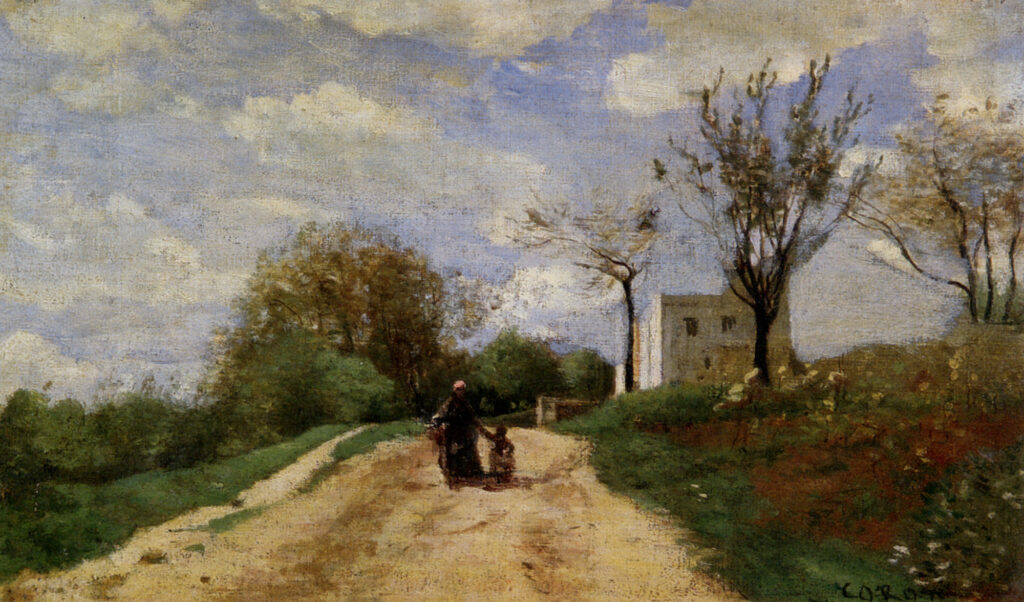
Trees and a Swamp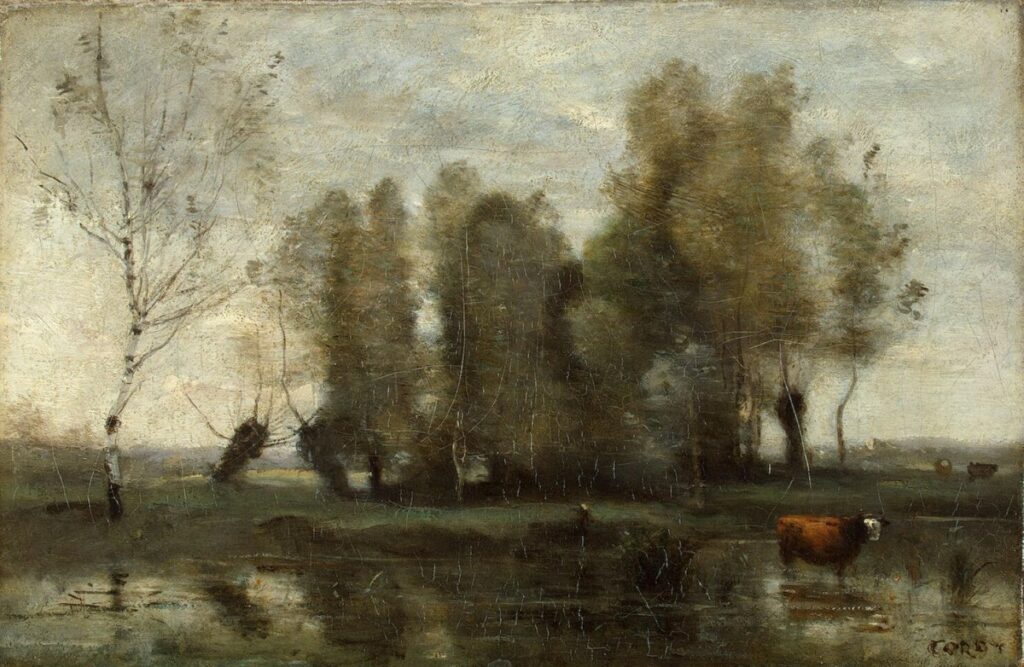
A View Near Volterra
Smyrna, A Boat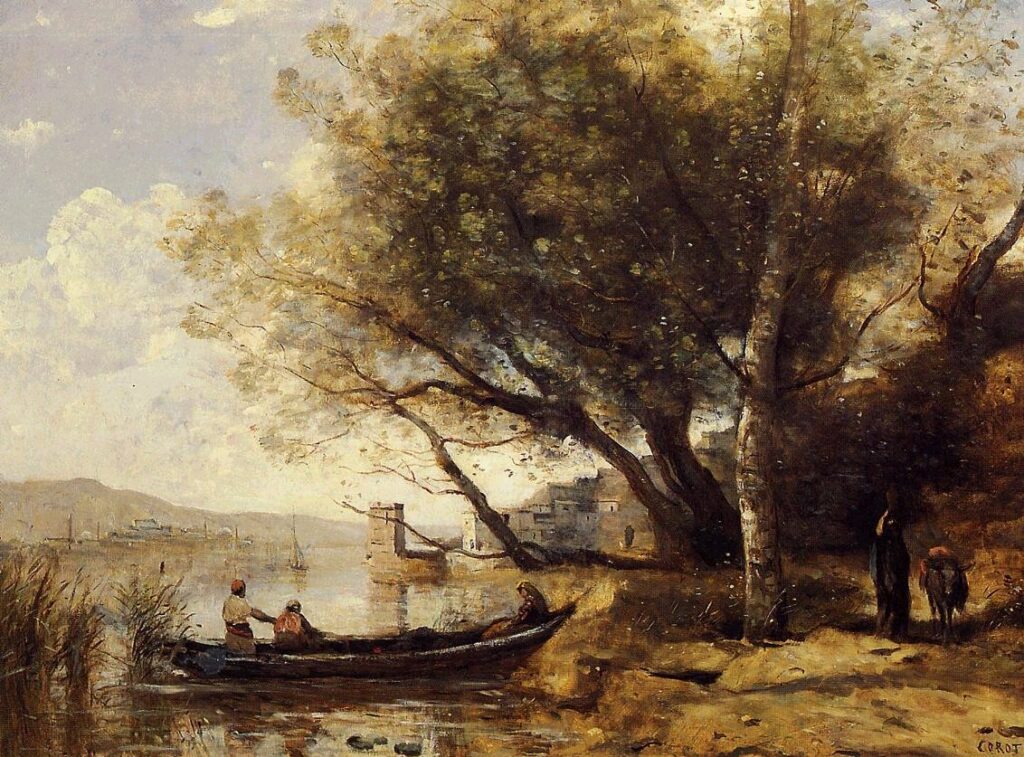
A Sudden Gust Of Wind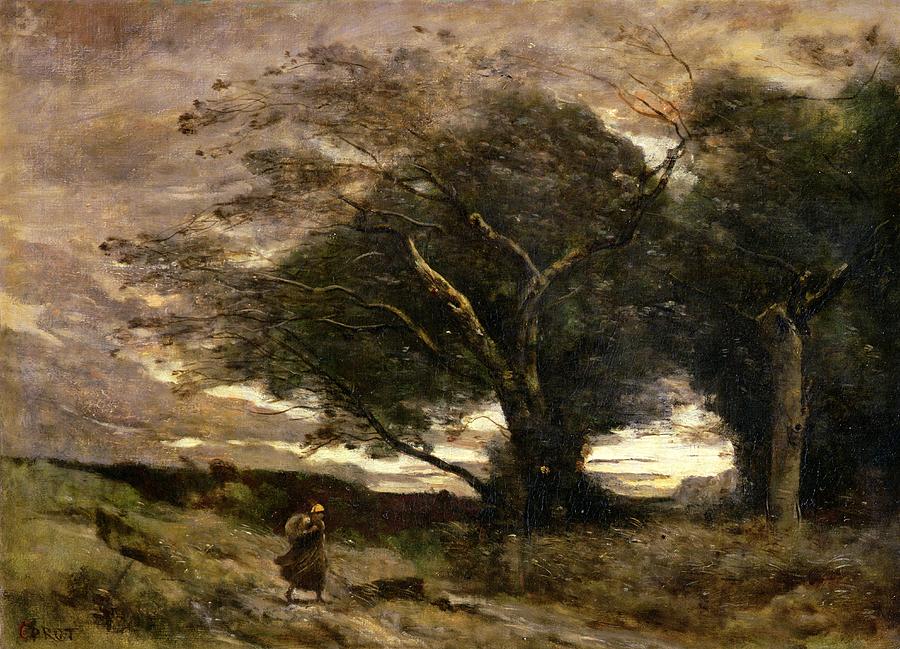
I love this last one most of all, because it’s almost a photograph, so well does he capture the effect of wind on both the trees and the walker. But I would be happy to hang all the above on my walls.
In fact, what I think I’d do is get four small 18″x12″ Corot landscapes from, say, iCanvas and arrange them on a wall, thus:
Hey, it’s not too bad a dream, is it?
Corot also did portraits and such, but to be honest, I don’t care for them at all. Here’s one which I think is his best:
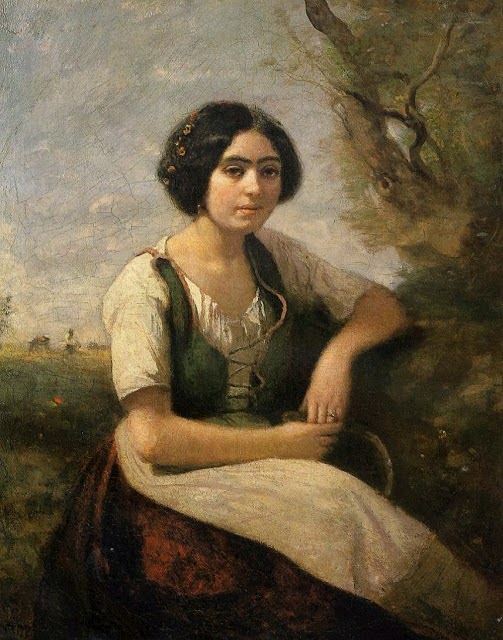
…and another more like his others:
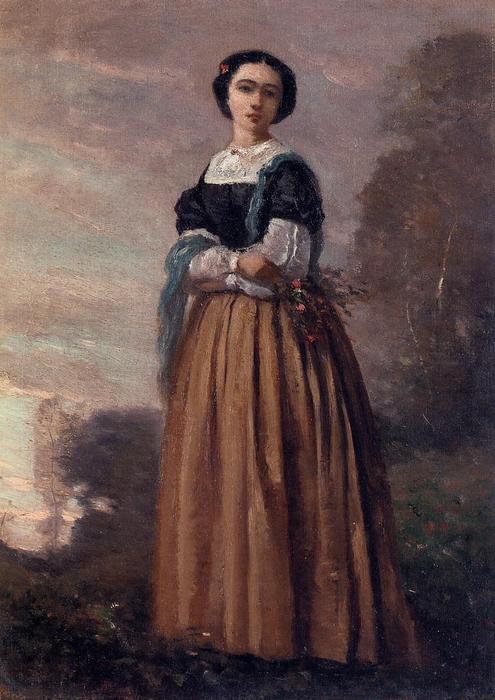
Sorry, but no. I have high standards when it comes to portrait paintings, what can I say?
*The appreciation of art was truly a neglected part of my education. Art classes at high school gave me an understanding of movements such as Impressionism, Dadaism, Surrealism and so on, but I never learned to appreciate art properly. So when I went back to university in my early 50s, I took one such class, realized that I needed to take another, and then took a couple more.
I just wish I’d taken them earlier on in life, because I’ve missed so much.

